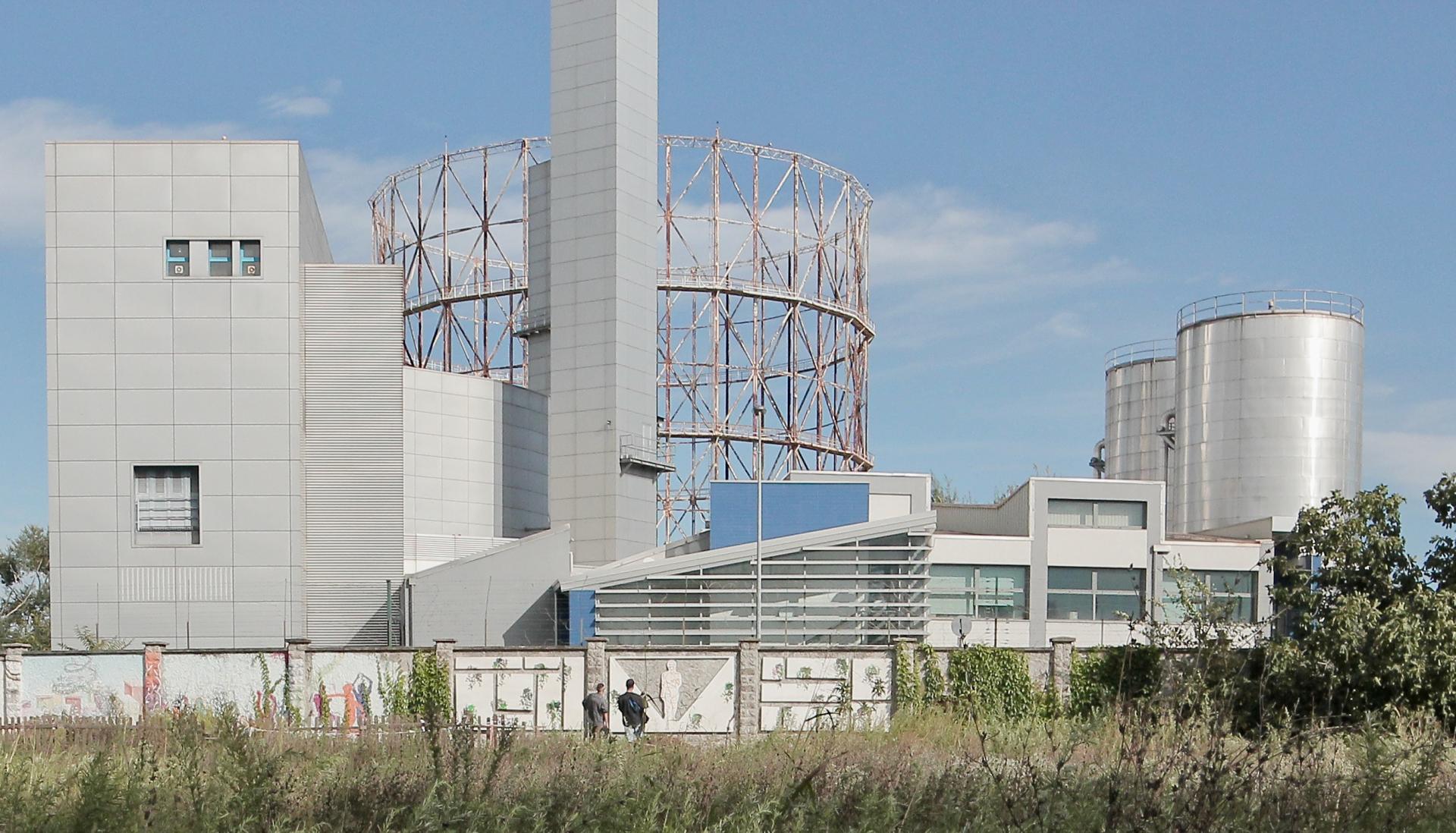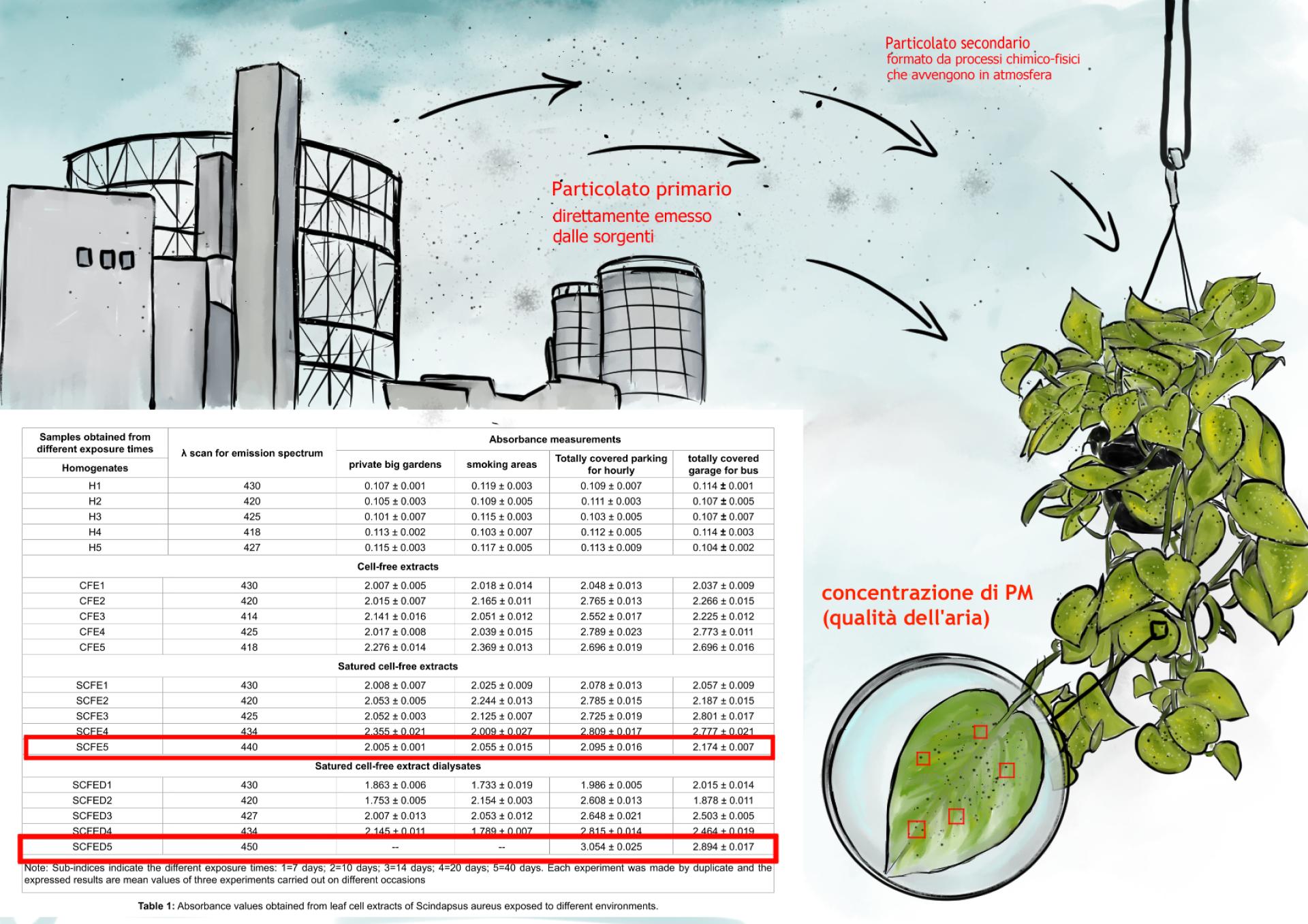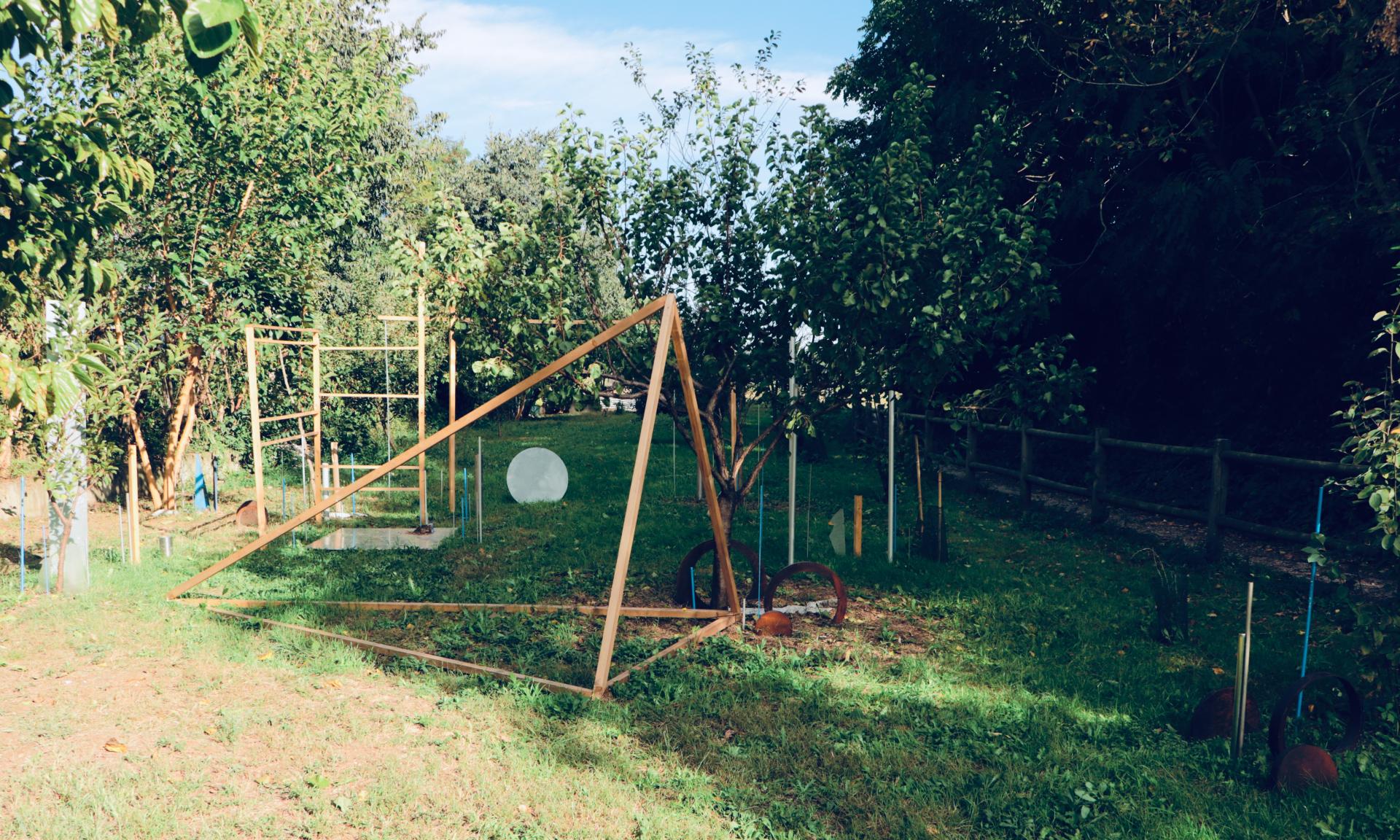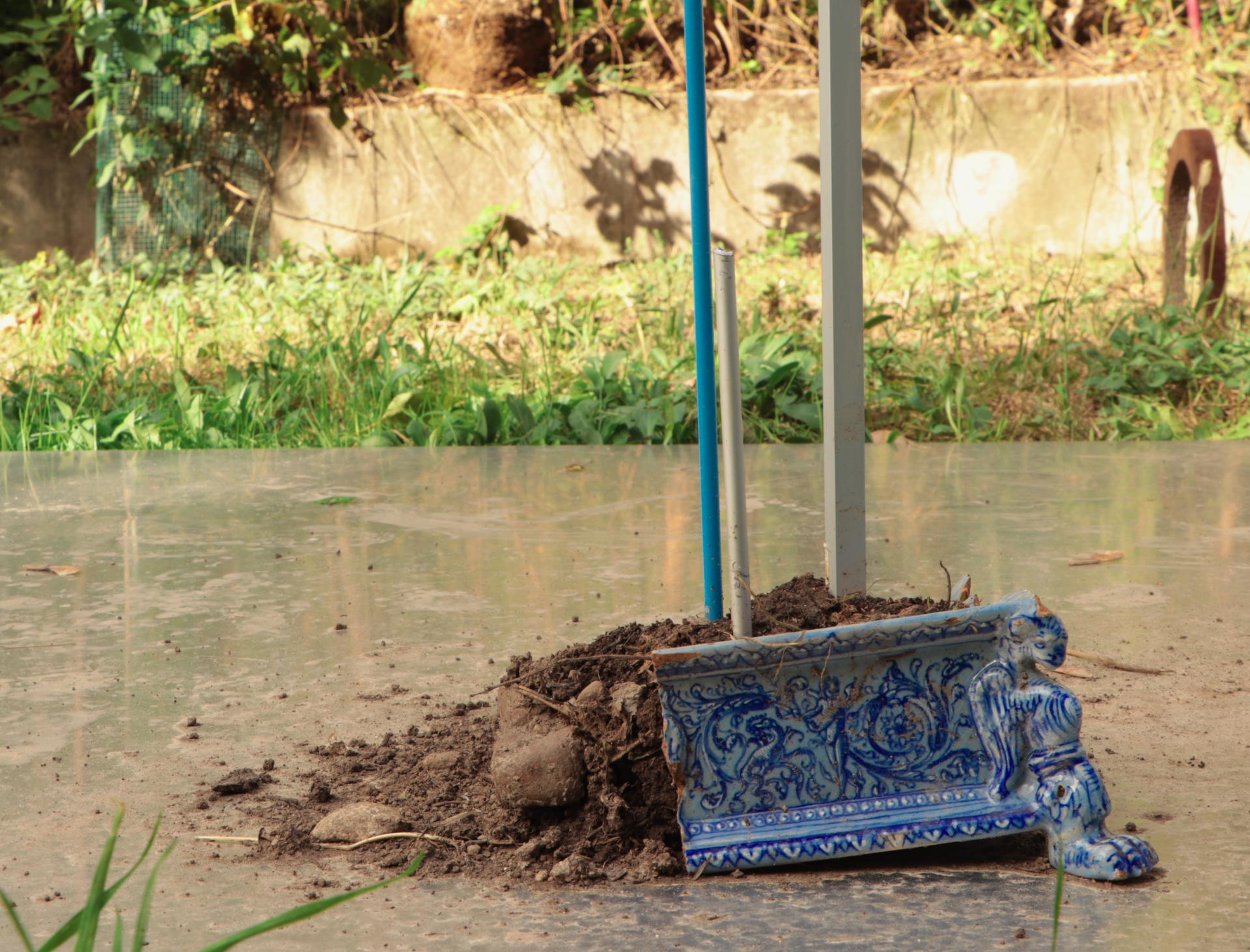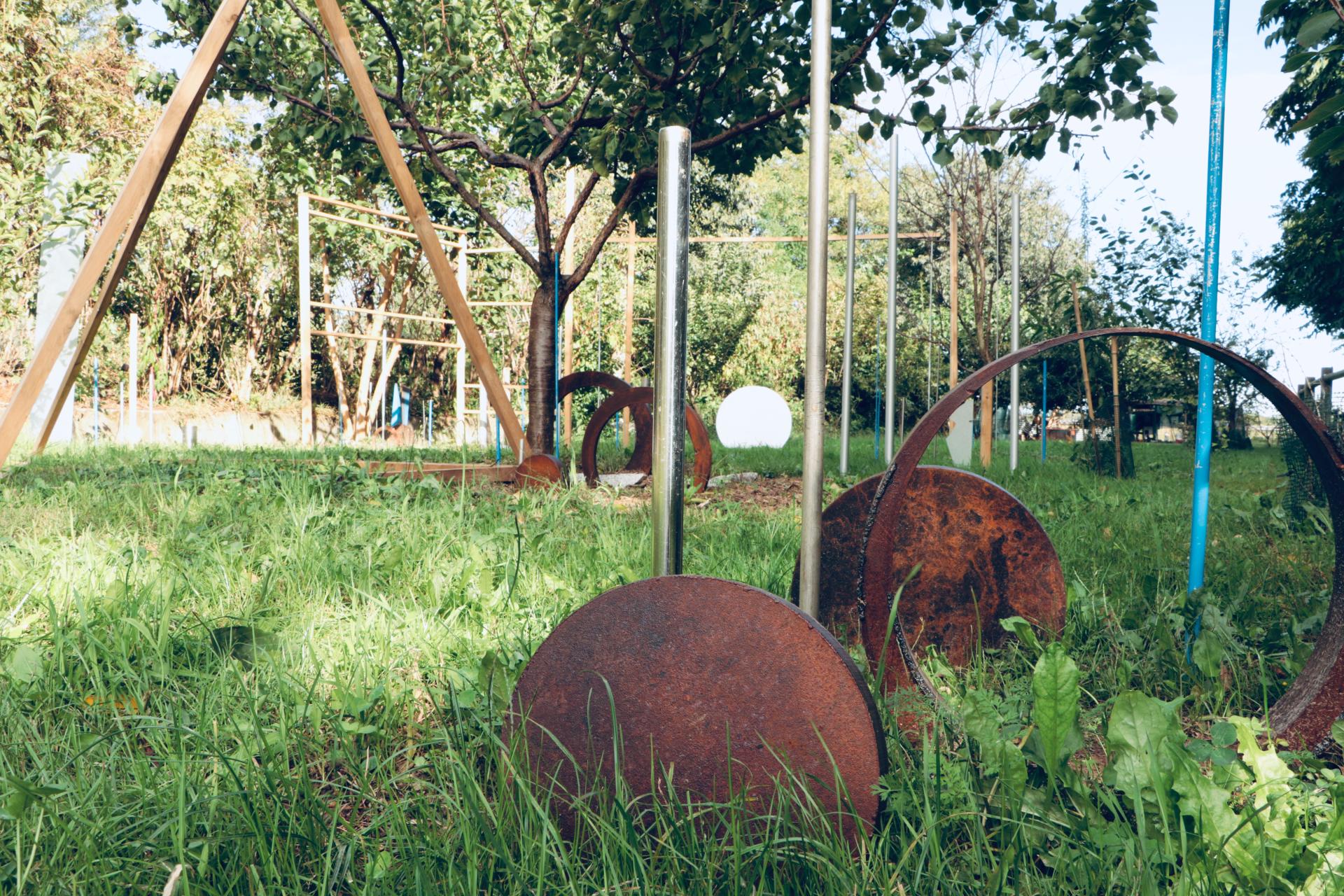Still Possible Thoughts
Basic information
Project Title
Full project title
Category
Project Description
The research behind the exhibition desires to find new narratives to imagine a new, sustainable and responsible future for the land and its inhabitants. Generating art in alternative spaces, extraneous to profit logic and inclusive towards the community, favor responsive behavior for the planet that hosts us and transforms the exhibition into a moment of aesthetic and ethical experience between the encounter between biological species, humans, non-human, and digital elements.
Geographical Scope
Project Region
Urban or rural issues
Physical or other transformations
EU Programme or fund
Which funds
Description of the project
Summary
By now, every philosopher, scientist, scholar, or intellectual of the world has told us and described the dramatic multi-species environmental crisis in which we find ourselves. In the Anthropocene age, pollution determines human mortality rates, and the logic of profit endangers an animal or plant species every day.
The planet we live on is damaged, it’s essential to think of possible alternatives to the destructive patterns that have led us to this point. The research behind the collective art exhibition “Still Possible Thoughts”, desires to find new narratives to imagine a new, sustainable and responsible future for the land and its inhabitants. The coexistence practices among the earth’s creatures play around the principle of simpoiesis (from the Greek do-with). The exhibition works are formed and contaminated by the encounter between biological species, humans, non-human, and digital elements.
In the world of contemporary art, where museums are less attractive than shopping malls, it becomes just as important to wonder where we think and where we shape our ideas. Generating art in alternative spaces, extraneous to profit logic and inclusive towards the community, favor responsive behavior for the planet that hosts us and transforms the exhibition into a moment of aesthetic and ethical experience. CasciNet - Agro Hub involves the local community in the recovery of Cascina Sant’Ambrogio and the surrounding land to promote culture as an authentic, harmonious, and integral expression of all human dimensions. In Cascinet - Agro Hub the citizens have concretely transformed a portion of reality to reconnect in a synergic way with people, practices, historical-environmental heritages, and exercises of dreaming innovation.
Key objectives for sustainability
Artwork by Camilla Alberti — Midsummer fires, 2020
Material of recovery: wood, iron, steel, copper, stones, aluminium, ceramics, plaster, marble
Camilla Alberti tells her story with an immersive installation designed to be observed and crossed. Modular structures of the installation remind organic and inclusive architecture of plants, where there is no inside and outside but a habitat inserted within the becoming. The installation’s extraordinary aspect is that every object and material is not limited to the artist’s will who disposes of them but is perpetuated and modified, affecting other living species such as mold, animals, or plants. "Midsummer fires" becomes a functional space, without limits and borders, where different construction methods are explored to transform our lives and inhabit the world. Every element of the installation has been recovered from landfills, scraps of factories, and then reassembled by the artist to demonstrate the importance of ruin as a manifestation of the new and not only destruction of the old. Remaining on the theme of cohesion, Camilla Alberti interfaces with the land of Cascinet's vegetable gardens. In the installation Midsummer fires she places a series of objects discarded by the human world: they are production rubble harmoniously inserted in the landscape. The aim is to trigger cohesion mechanisms between the objects and the surrounding ecosystems in a non-invasive way: insects and plants interact with the structure, modifying its structure.
Key objectives for aesthetics and quality
For the creation of graphic identity, we thought of the representation of a term that could express both the intrinsic naturalness of Cascinet - Agrohub and the reasoning on new possible scenarios regarding the relationship between humans and nature. In this sense, the visual research focused on defining the rhizome, a type of plant root that expands horizontally in the soil, storing nutrients essential for the plant’s needs. A botanical table from the end of the 19th century was therefore retouched and declined according to a soft and light chromatic combination to make it perfectly compatible with the lettering and text of the poster itself. The rhizome also represents the philosophical thought called “rhizomatic”, coined by Gilles Deleuze and Félix Guattari, to favor a new philosophical and social thought, anti-binary anti-hierarchical.
Key objectives for inclusion
Artwork by Federico de Lorentis — Connecting Rod, 2020
4000 stickers in collaboration with Mattia Pan
The idea was born from the “connecting rod” architectural elements, the iron embrace that tightens and strengthens the Romanesque apse of the church in Cascinet. The two arms are narrow by a third element, a firm and rigid wedge that makes two distinct parts consolidated into a single shape.
By transforming the mechanical junction into a digital connection, the artist avoids any material construction and activates the work directly in Milan’s urban fabric, focusing on the streets and waiting places. Despite the absence of physical traces at the exhibition site, the artist uses the possibilities connected to the digital to emanate as much as possible the spirit of Cascinet, informing the citizens and enhancing the reality. The artist’s action is configured in the massive distribution of stickers with a QR Code through the city streets to allow anyone who frames it to access a page with the specific position of Cascinet on the map. As a digital canvas, the web page is conceived, designed directly by the artist. Letting ourselves be transported along the art path we find the church dating back to the Romanesque period and from its characteristic connection of the tie rod (title of the work), Federico De Lorentis draws inspiration to tell the story of the link of this territory with the city. The artist has created QR code stickers - placed in the waiting places of the city such as bus stops - that connect the viewer to the map of Milan where the farmhouse is marked.
Results in relation to category
Artwork by Veryseri -- If Only We Could, 2020
Serigraphy and mixed media, sixteen canvases
The work of Veryseri is set around the awareness, corroborated by countless scientific data that our planet is permanently damaged (Anna Tsing, Arts of Living on a Damaged Planet, 2017) and desires to imagine new stories and divergent thoughts on inhabiting our planet. The main element is the plant of Potus, a natural indicator of pathogens in the air. This organism develops an enzyme that facilitates eliminating some toxic substances absorbed by the atmosphere (enzyme P450, Potential Biomarker of Polluted Environment’ - Journal of Pollution Effects & Control, by Cruz M, 2018). Due to the absence of actual support policies, especially to arts, the plant element is not present in its physical form but only in screen printing on canvas.
Just as the Potus plant survives and adapts to recent environmental changes, artists also use their creativity to overcome economic limitations and develop equally powerful alternative solutions.
Suppose humans are primarily responsible for the environmental crisis; in that case, now that the urgency is imminent, the artist has the task of generating a revolution of practices and thought that are sustainable and practicable for the planet. The work that opens the path is the one by the VerySeri collective entitled Se solo potessimo (If only we could); it is an installation composed of sixteen canvases bearing silk-screen prints of Potos, a plant that signals the variations of pollutants in the air. In the middle of this screen-printed forest we find a human figure walking towards us, a being that tries to start again from the rubble of contemporaneity to reinvent its own role in the world.
How Citizens benefit
Interactive Performance by PSICO.LOBO
Inside the first issue of Situationist International’s bulletin (1958), psychogeography is defined as the “study of the precise effects of the geographical environment, which acts directly on individuals effective behavior.” According to this theory, it is essential to understand the urban environment as an active device, able to influence the individual’s behavior and thoughts. The progressive loss of self-awareness and corporeality is the glaring effect of cities’ inexorable industrialization and commodification. Psico.Lobo is a multidisciplinary creative collective conducted in unison by psychologists and artists. The collective works with movement and repetition of iconic gestures to regenerate the gaze towards ourselves, the community, and the space surrounding us. From the need to get lost to tell the story comes the performance “Nature is Human,” an interactive game where the public becomes the protagonist to rethink the rules of shared space and the relationship between bodies.
Nature is human is the hybrid between psychology and art presented by the collective Psico.Lobo that refers to the Situationist geography and with the performance created specifically for Cascinet - Agro Hub invites the audience to re-think the rules of shared space and the relationship between public bodies.
The boys of the group have also created a series of workshops related to these important themes of contemporary life. The invitation to discover this uncontaminated urban landscape is the main intention of the exhibition, which stands as a device of re-understanding of shared places as an escape route from a future inexorably condemned to human self-destruction.
Physical or other transformations
Innovative character
“An urban area is not determined solely by geographical and economic factors, but also from the representation of its inhabitants and other neighborhoods”
Chombart de Lauwe, 1952
Cascine Aperte Association - XIII edition - 25,26,27 September 2020
The event is promoted by Associazione Cascine Milano to raise awareness of the protection, preservation, and enhancement of farms and the rural heritage of the city. The event, part of the Festival of Sustainable Development, has the patronage of the Regional Council of Lombardy, the City of Milan, the Metropolitan City, and the South Milan Agricultural Park, and was realized with the contribution of the City of Milan, in collaboration with the Association 100 Cascine. The 13th edition of Cascine Aperte will not be like all the others. In such an unexpected, complicated, and tiring year, the Cascinet is not giving up making their presence felt in the city, both as single entities and as part of a network.
Learning transferred to other parties
Cascinet - Agro Hub is a particular urban context: a mix of crumbling industrial architecture frames a reality far from industrialization. Here stands the Cascina Sant’Ambrogio, a classic historic Lombard reality. A place where children experiment with the Munari method and adults manage a shared vegetable garden free from ownership constraints. In the middle of this unreal rustic peace of Milan, the exhibition Still Possible Thoughts, curated by Sofia Baldi, is installed in the garden, with the participation of young artists with a single intent: to show the importance and the maintenance of these realities because of a future compromised by the rhythms of the Anthropocene, which is causing the death of global ecosystems and their balance”.

